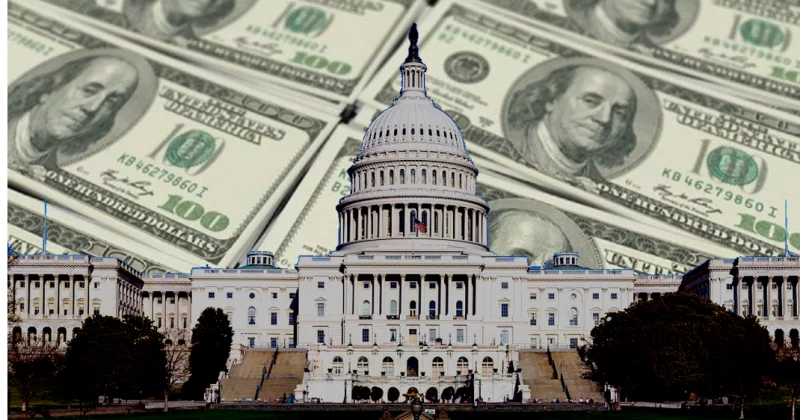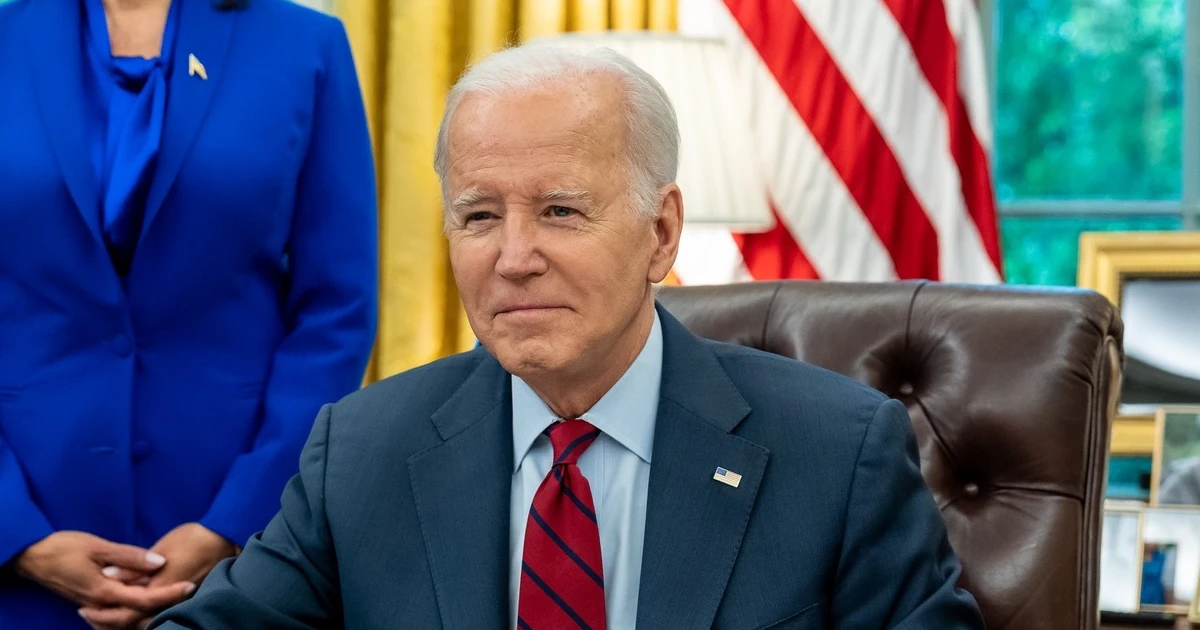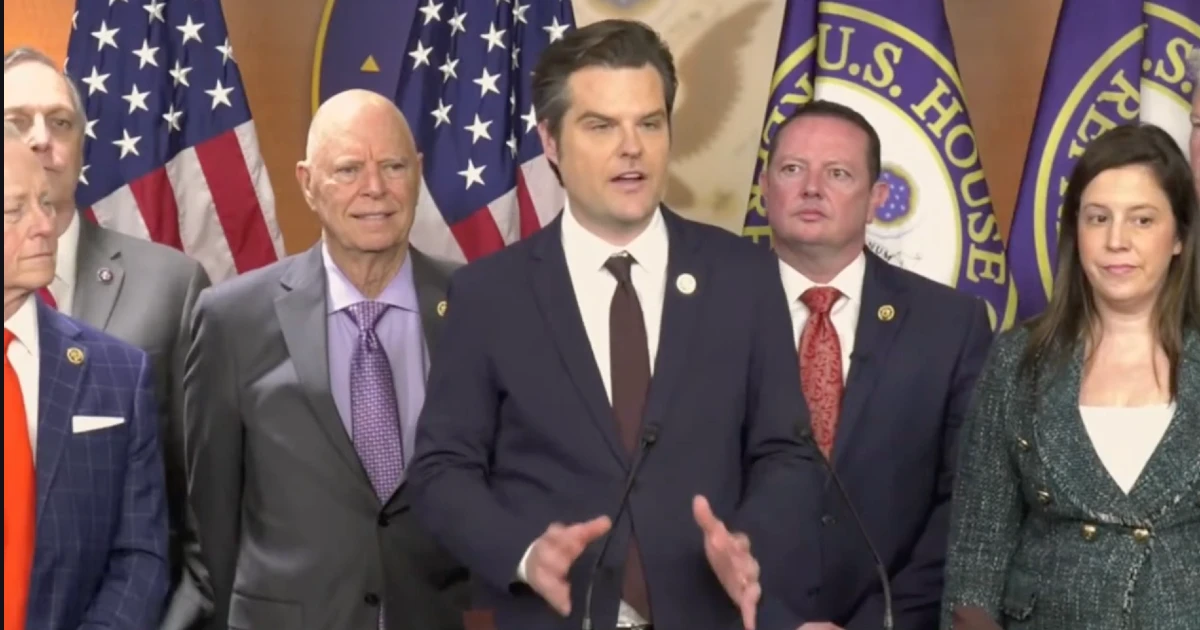Last week marked the 200th anniversary of the signing of the Adams-Onís Treaty in which Spain ceded the Floridas to the United States.
Freshman U.S. Rep. Greg Steube, R-Fla., introduced a resolution to commemorate the occasion.
“It is important to commemorate this momentous anniversary,” said Steube. “My hope is that with this resolution we will shine a light on this often overlooked piece of American history. The Adams-Onís Treaty is not only an important part of my state’s heritage, but also the heritage of the United States. The treaty paved the way for the later completion of the Louisiana Purchase and led to tremendous contributions to the United States economy from the Sunshine State.”
“The Adams-Onís Treaty gave the United States control of Spanish lands that constitute present-day Florida in addition to the land stretching from its panhandle westward, across the southern portions of modern-day Alabama and Mississippi to the eastern banks of the Mississippi River. Spain entered into negotiations with the United States following the invasion of then General Andrew Jackson during the First Seminole War (1817-1818). On February 22, 1819, the treaty was signed by then Secretary of State John Quincy Adams and Spanish Diplomat Don Luis de Onís,” Steube’s office noted. “The Adams-Onís Treaty also ushered in the first member of Congress of Hispanic decent, Joseph Marion Hernández, who served as Florida’s first Territorial Delegate during the 17th Congress (1821-1823).”
Steuebe got much of the Florida delegation behind the resolution including Democrat U.S. Reps. Ted Deutch and Darren Soto and Republican U.S. Reps. Mario Diaz-Balart, Neal Dunn, Matt Gaetz, Brian Mast, Bill Posey, Ross Spano and Michael Waltz.
While not a great or even above average president by any means, Quincy Adams’ importance to American history goes far beyond his four challenging years in the White House. Simply put, Quincy Adams was one of the most influential diplomats and Secretaries of State in American history with his fingerprints on the Treaty of Ghent which ended the War of 1812, the Monroe Doctrine, the Rush-Bagot Treaty which stabilized relations with the British and ensured the Canadian border would be demilitarized and other important matters. After his presidency, Quincy Adams would be the leading anti-slavery voice in Congress, pushing back against the peculiar institution by defending the slaves who took over the Amistad and leading the fight against the gag rule, the Texas annexation and the War with Mexico.
While much of Quincy Adams’ legacy remains celebrated, as Steube noted, the Adams-Onís Treaty is too often overlooked. Quincy Adams, President James Monroe and Jackson knew the simple truth: gaining Florida was a cornerstone to helping secure the republic.
A quarter of a century ago, as an undergrad studying history at Trinity College in Connecticut, I came across “The Era of Good Feelings,” a Pulitzer Prize winning book from George Dangerfield. In it, Dangerfield stressed how important Florida was.
“People used to say that whoever possessed the Floridas held a pistol at the hear of the Republic,” Dangerfield wrote.
And then some.
Those words hit home for me, thanks in part to some great teachers like Frances Brewster and Janet Coburn at Samuel W. Wolfson High School in my hometown of Jacksonville. After retiring from Congress, longtime U.S. Rep. Charles Bennett, D-Fla., also helped inspire me with his many books on the history of Northeast Florida. He even took the time out of his busy schedule to meet with me when I was still in high school to talk about Florida’s role at the end of the eighteenth and start of the nineteenth centuries.
From these mentors, my reading and spending many summer days exploring old forts, visiting museums and trooping around the area, I knew the Floridas were the scenes of several border battles during the Revolution and the early days of the new nation. While the Spanish launched attacks on Pensacola during the Revolution, the Americans tried several times to take St. Augustine, the closest being General Robert Howe’s campaign in the summer of 1778. Even after the Revolution, tensions remained high in Florida with the Spanish facing an attempted rebellion in the 1790s backed by the French revolutionary government. The Madison administration annexed parts of West Florida in 1811 and backed an uprising on Amelia Island a year later. Slaves from across the region fled to Florida where they were protected by the Spanish and the growing Seminole tribe. Even as Monroe took office with Quincy Adams in his Cabinet in 1817, Scottish adventurer Gregor MacGregor seized Amelia Island, claiming to be working with Mexican revolutionaries. As Steube noted, Jackson’s forces invaded Florida as part of the First Seminole War, prompting Spain to come to the negotiating table.
While I had been focused mostly on the coming of the Civil War at Trinity, pondering the role of the Floridas in the shaping of American history changed my focus. Under Dr. John Chatfield, a fan of Dangerfeld though he always preferred that historian’s “Awakening of American Nationalism” over “The Era of Good Feelings,” I opted to do my senior thesis on John C. Calhoun’s tenure as Secretary of War under Monroe, dealing with Jackson’s invasion of Florida, the Adams-Onís Treaty and the building of postal roads and coastal defenses in the new American territory. Even though I was a thousand miles from home, I was trying, in my small way, to write about the towns and historic sites I explored on summer afternoons.
The United States would have more than its share of growing pains in the years to come including the Second and Third Seminole Wars. But with the Adams-Onís Treaty, after more than two and a half centuries, European powers would finally be out of Florida. The pistol held at the heart of the Republic had been disarmed. Florida, the crossroads of the Americas, would be a key part of the United States instead of fought over by the French, Spanish, British and newly declared nations in Latin America. Two centuries later, that’s the legacy of the Adams-Onís Treaty as Florida has grown into the third most populous state and, with is changing demographics and economy, offers a road map to the nation’s future. Steube is spot on with his assessment of the treaty’s importance to the nation’s and Florida’s history–and even my own.
Kevin Derby can be reached at Kevin.Derby@floridadaily.com.












